Civitella del Tronto
Saved for a rainy day
We are driving on a country road, peering through rain-splattered windows, when someone remarks, predictably, that it would all look so much better if the sun were shining.
It could be Scotland
We are in the province of Teramo, heading for Civitella del Tronto, and the morning that started out dull and unpromising has become wild and wet. But even on this rain-swept day the landscape has its own beauty: the patchwork fields fringed by woodland, the mist ribboning the mountains in the distance. There’s not a soul about – only a few sheep that pause in their munching and raise their sodden heads as we pass. It could be Scotland, says someone. And it could be, except that on my childhood Scottish holidays I don’t remember it ever being quite this wet.
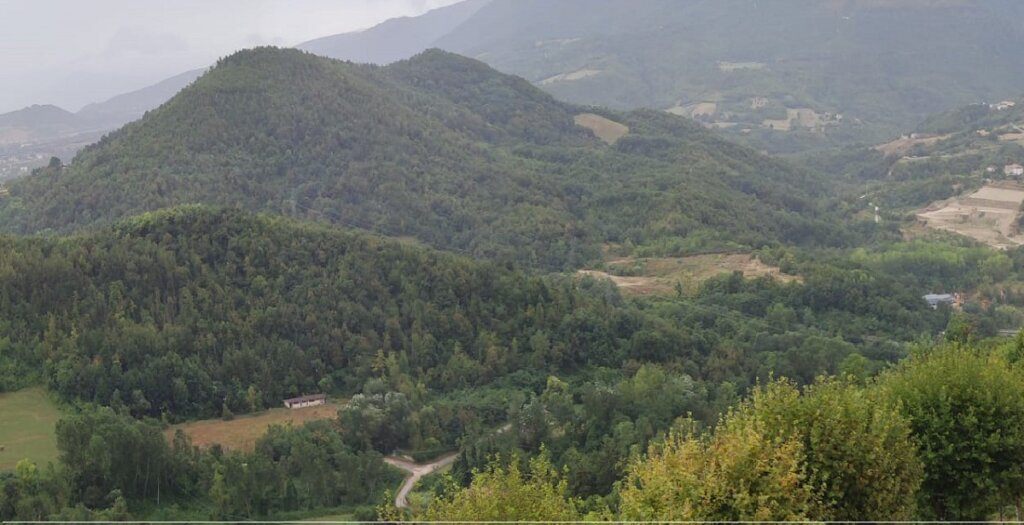
But before you can say Brigadoon, the landscape changes. Prickly pear, fig trees and traditional farmhouses in pale yellow stone, much grander than Scottish bothies, break the Highland spell. Some buildings have crumbling outside staircases leading to the second floor, a few are abandoned and overgrown with ivy but they are all utterly charming and a striking contrast with the modern cement houses in the villages we pass. Even on this rainy day it is not hard to picture the farmer and his family assembled outdoors for their mid-day meal, under the shading boughs of a fig tree
As we pull into the carpark of Civitella we realize we’ve been deceived by the deserted country roads. Evidently the entire coastal population of Abruzzo has been saving this hill town for a rainy day. Or so it seems. Day trippers are everywhere, clicking open umbrellas and Velcro-ing themselves into K-ways and their kids into watertight buggies to a soundtrack of zipping and snapping that signals optimal equipment and organization.
Sadly, we are under-equipped and disorganized. But we do have a plan. First, coffee. Second, acquire rainwear. So we follow the Gore-Tex army up the steps from the carpark and through the arch into town.
Under the awning of the main hotel we sit on metal chairs and gaze over the rims of cappuccino cups at the rain spitting off the road and the puddles forming between the cobblestones. We are in a rectangular piazza with one side open to the valley below, probably offering spectacular views to anyone who dares to brave the elements to see it.

I venture off alone in search of something to keep me dry and soon find a shop that sells everything from sweaters to salami. There is one black rain jacket hanging in the doorway and it looks as if it might fit. The price is not high but it’s vexing to think that it has most certainly doubled since yesterday, when the sun was shining. Gripped by indecision I look to the shop owner for some encouragement. He and his wife stare stonily back from behind the counter.
I turn back to the doorway. Outside, it might be my imagination, but the rain seems to be easing. And with that I make my decision, leaving the jacket on its hanger and flashing a smile at the shop owners as I leave. They stare back, more resigned than hostile. No doubt, in turning out to be just another faffing, time-wasting tourist, I have fulfilled their expectations. As I step into the street the rain peters out and the sky brightens. Buoyed by the promise of brighter weather, we set off in high spirits to explore.
Our first stop is the church of Santa Maria degli Angeli.

Santa Maria degli Angeli
‘Chicca’ is a child’s word for sweety or candy. But it can also describe something unpretentious yet delectable. Behind its simple stone façade, the church of Santa Maria degli Angeli at Civitella is without doubt a ‘piccola chicca’, a little beauty. The walls of the interior are rose-coloured, those behind the altar a pale, pearly blue. The gentle curves of the vaulted ceiling draw your eyes heavenwards, where the light streaming through the upper windows plays on the fine decorations.
The effect is delicate, airy, spirit-lifting, and we are enchanted. Until, that is, we learn that this church so aptly called Holy Mary of the Angels has a second name with brutal connotations. It is also called Santa Maria della Scopa, that is, ‘of the broom’, which is what the original confraternity used to flagellate themselves with.
On to the Fortress
Shaking this image form our minds, we leave the church and plod onwards and upwards to Civitella’s main attraction, the Fortress. Like many hill towns, Civitella del Tronto is built in tiers like a wedding cake, the Fortress being the uppermost layer. As the road winds up towards it, we pass low, perfectly restored stone houses in grey stone, framed by bougainvillea. Prickly pear bushes sprout from tidy corner gardens.
At last we are there. We buy our tickets at the entrance gate and climb yet another hill, flanked on either side by high stone walls, before finding ourselves in what seems to be a village with cobbled streets, seamed with moss, and two-storey dwellings. These are the soldiers’ quarters, some of which are open for inspection. The rooms are small and dark and must have been chilly in the bitter Abruzzi winters. There is a wash-hand basin, a narrow bed and a wooden desk.

On the wall is a list of chores, and we note with approval and delight that the soldier-inhabitant was duty-bound to wash his nether regions at least once a week.
We spend a long time at the Fortress. Most of the carpark crowd are here but the space is vast enough to contain all of us comfortably.
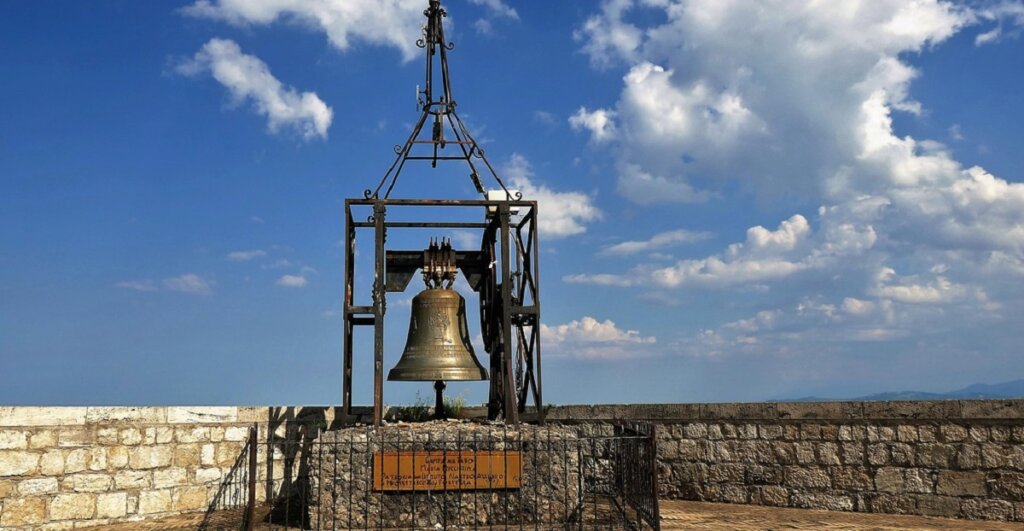
It is understandable that it should be such a popular attraction for it is the largest military fortress in Italy and second only to the Hohensalzburg in Europe. There are parade grounds and chapels, weapons museums and bookshops.
A bit about the brigands
To delve into an account of the soldier inhabitants of the Fortress since its construction by Filippo II, the Spanish king, in the sixteenth century, would be to slither down the rabbit hole of Italian history, or more precisely, of Abruzzo and all her invaders. Just as intriguing to us, though, are the brigands who are immortalized in paintings on show in the museums of the Fortress.
Looking at these depictions of the bloody skirmishes that took place in the area, it is tempting to think of the brigand from Abruzzo as a romantic figure like Robin Hood or Rob Roy Macgregor, stealing from the rich to give to the poor, a hero on the side of the oppressed. To what extent this is true it is hard to say. Nevertheless, the briganti did enjoy support from the local peasant population and it seems fitting in a way that the Fortress stands not only as a monument to the region’s invaders, but also to some of the locals who at least made the conquerors’ lives a little more difficult.
We end our visit with a walk along the rectangular battlements. We are 600 metres above sea level and the Val Vibrata below, lush after the rain and lit in patches by a hesitant sun, is quite beautiful. The appropriateness of the name is not lost on us: this is earthquake country.
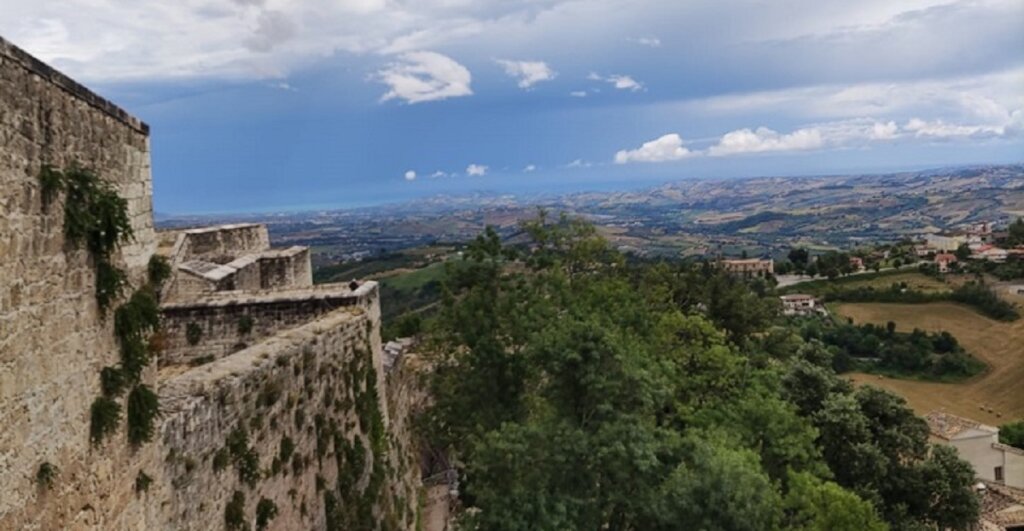
As we leave the Fortress we are faced with a dilemma. The sky has begun to look menacing again and we are hungry. And the Gore-tex army, having abandoned the Fortress, is now occupying all the available eating places.
Mule balls
There might be a possibility at the small sweater/salami shop. We make enquiries. Good news. If we don’t mind eating outside they’ll bring us taglieri, charcuterie platters. The owners spring to life, scurrying about and setting up a table and chairs in the street. Out comes a litre of wine and on comes the rain. We open our only umbrella over our little table and huddle beneath it.. And then come the platters, containing bread, cheese, olives, salami and … mule balls. Sorry? Did you say mule balls? Holy sh…. Well at least they are sliced up and don’t look any different from the other salami, which is a relief. But still.

The rain is getting heavier, though, and it seems important to tuck in without complaint, possibly without getting soaked. And to tell the truth, when you’re starving, and with a glass of local wine, mules balls are not at all bad.
Meal over, we run for the car and leave Civitella behind us. Soon we are wrapped in the mountain mist, with only the sheep for company.
A pity about the weather, someone says.
All you need to know
To get to Civitella del Tronto from the south, exit the A14 Adriatica at Teramo/Giulianova and take the Strada Statale 80 Gran Sasso for Teramo, and then the SS81 for Civitella. From the north, follow San Benedetto del Tronto-Ascoli, exit at Ascoli and take the SS81 for Civitella.
Park in the carpark and head into town. A ticket for the fortezza costs 6 euro and there are various discounts.
Don’t forget to try the mule balls.
Disclaimer: if you are reading this in any language other than English the translation is not mine.


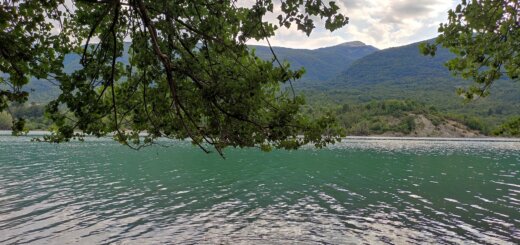
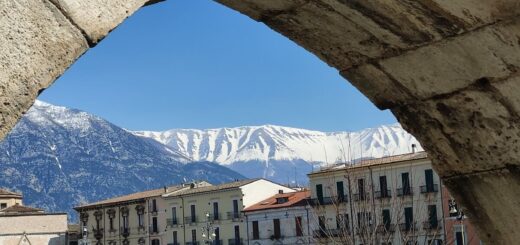
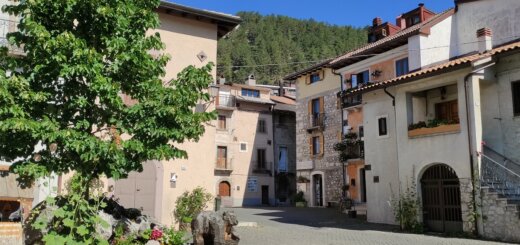

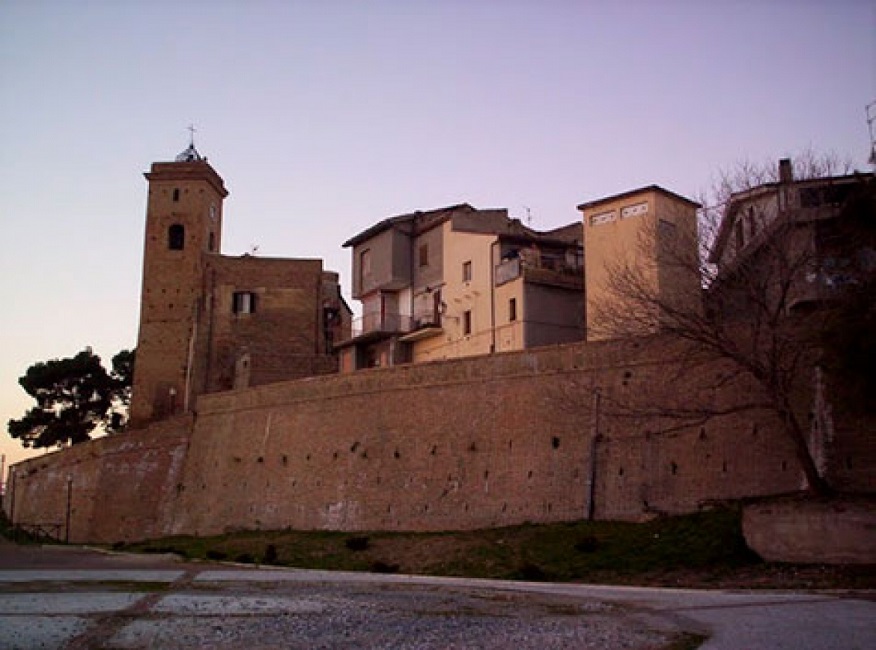
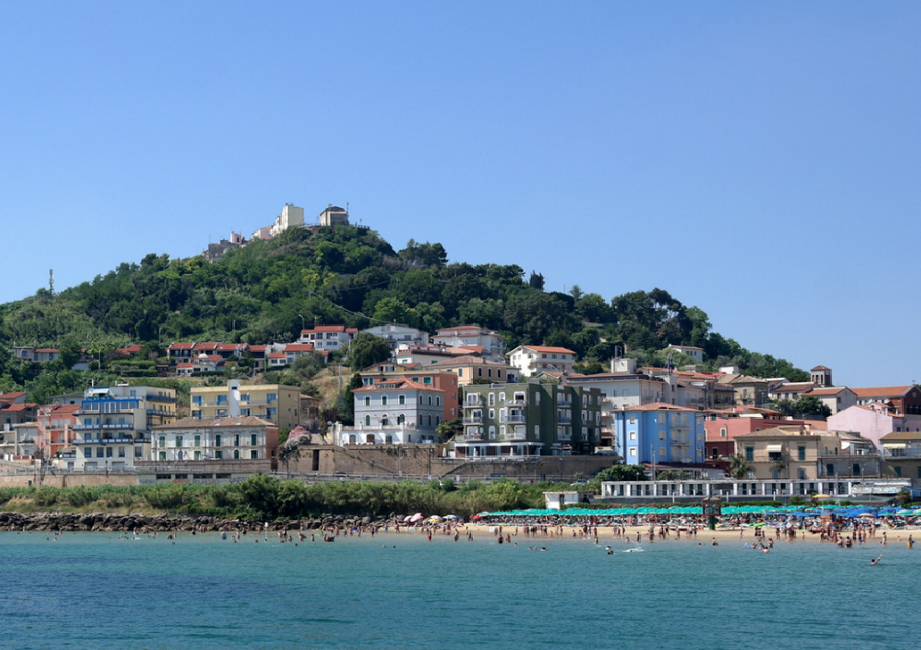
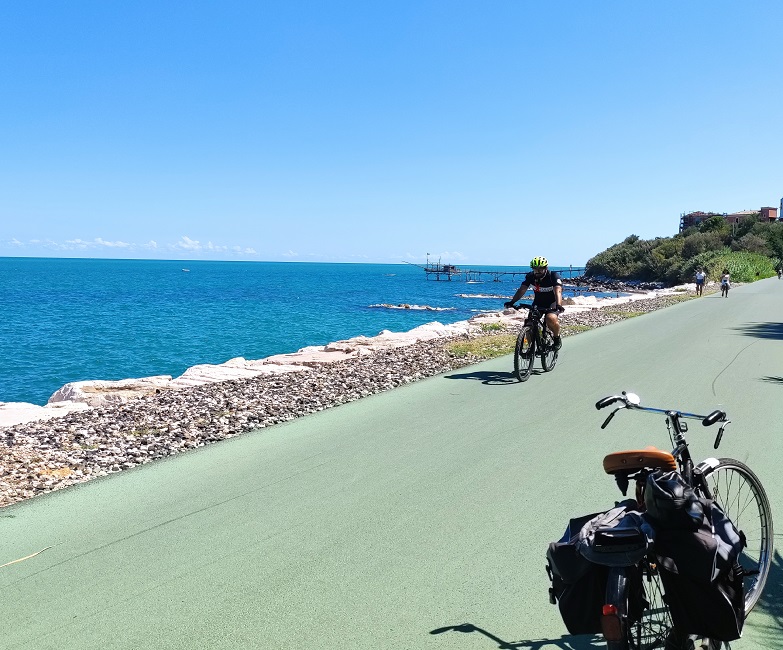
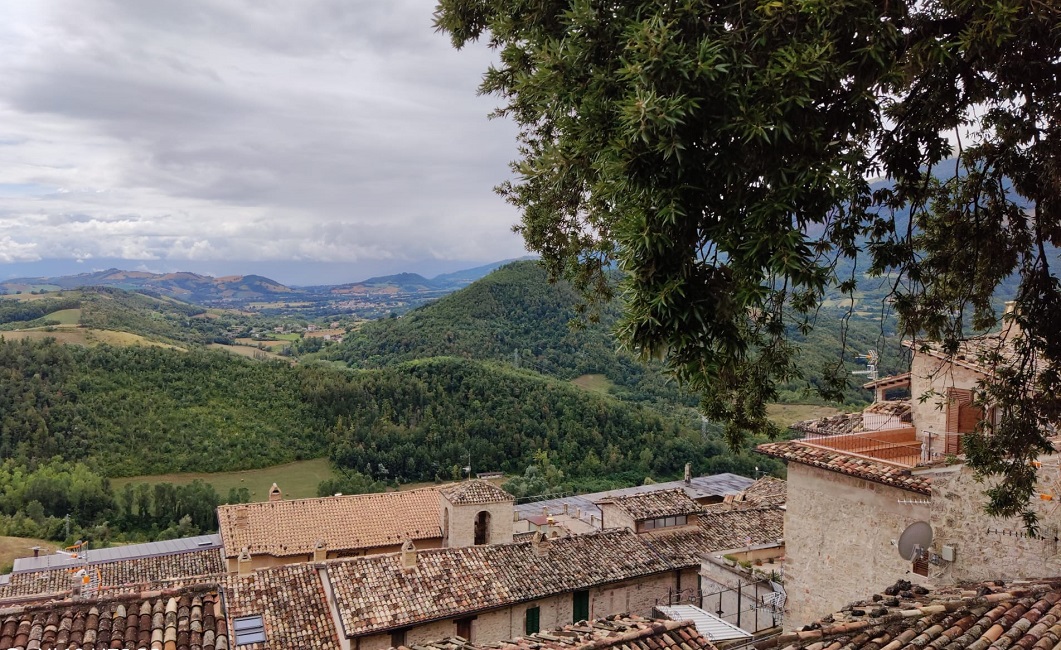
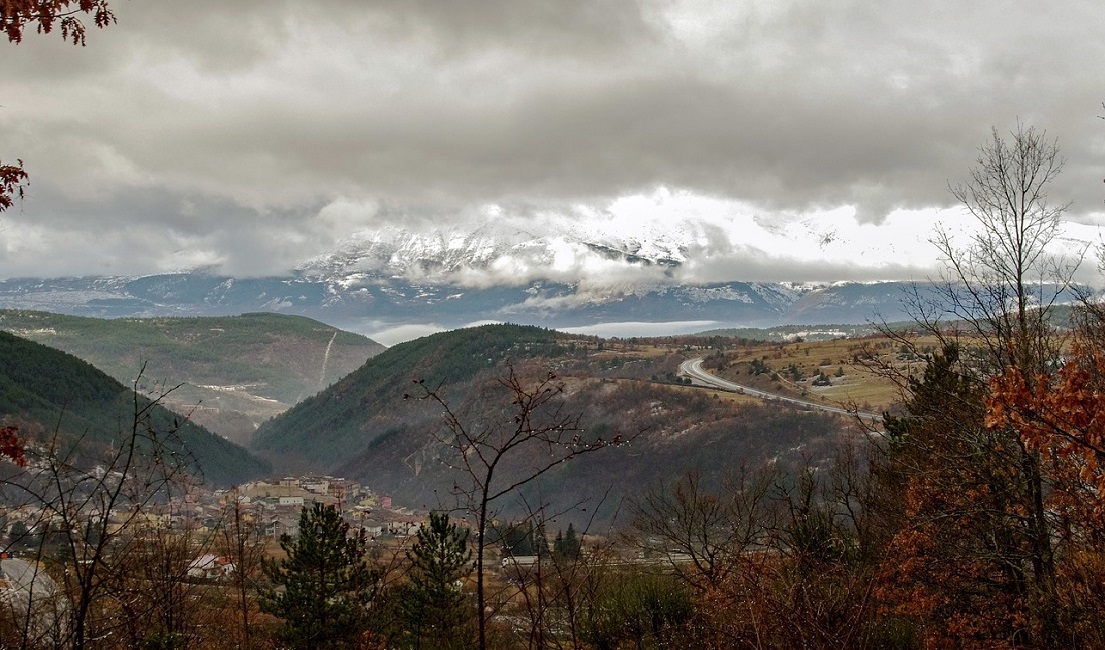
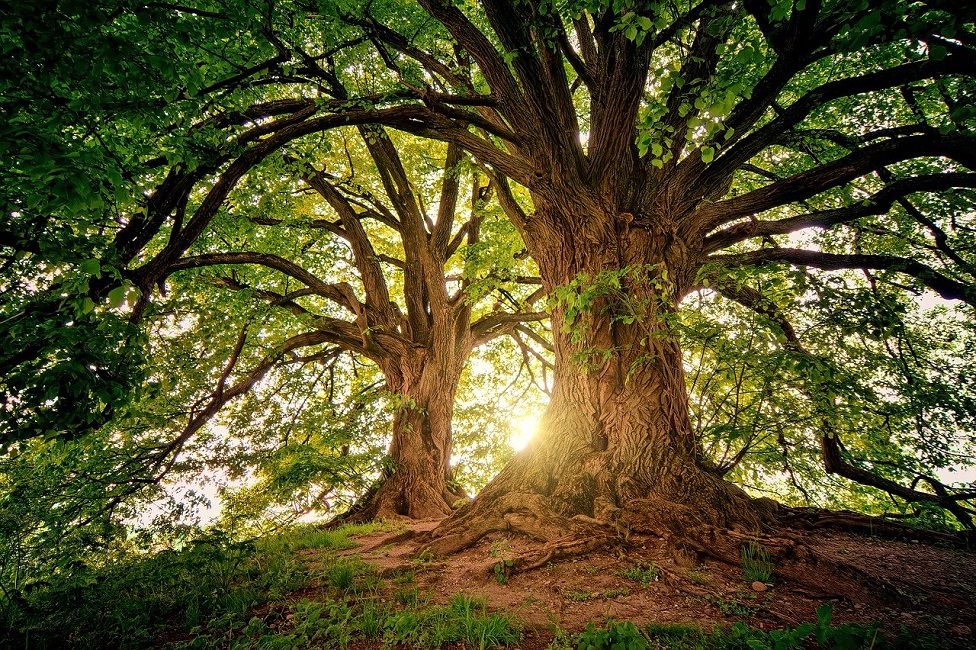
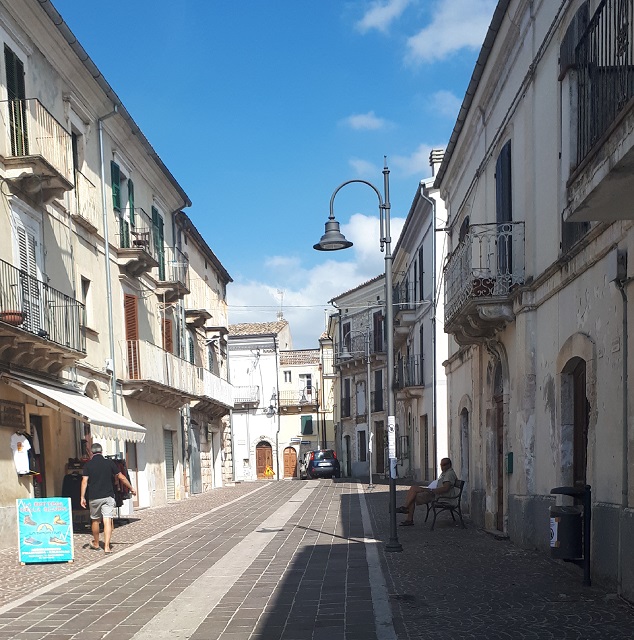
1 Response
[…] Dodging the Rain in Civitella del Tronto […]